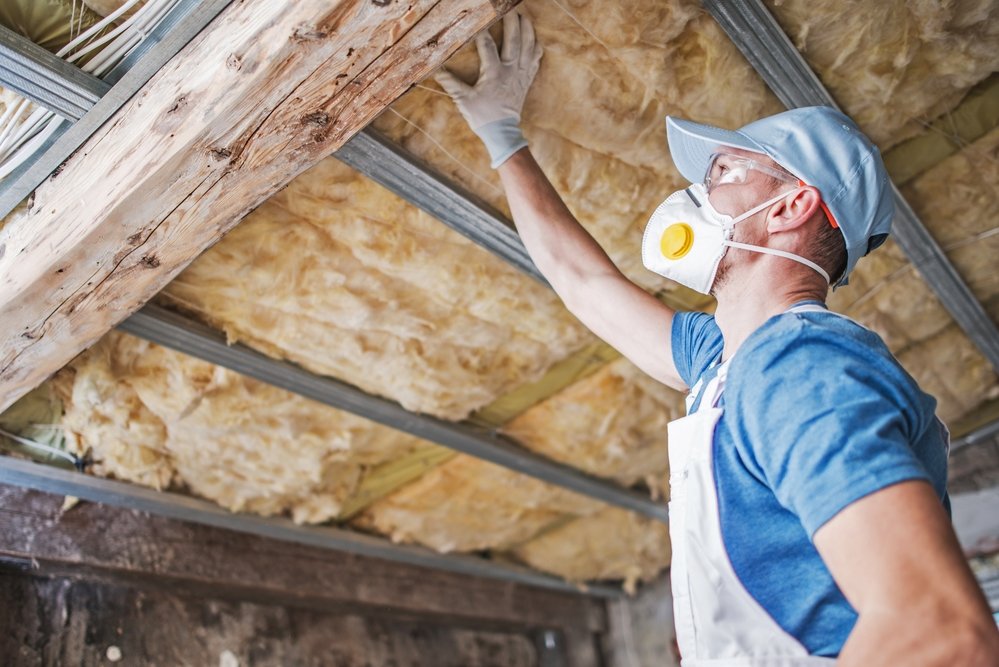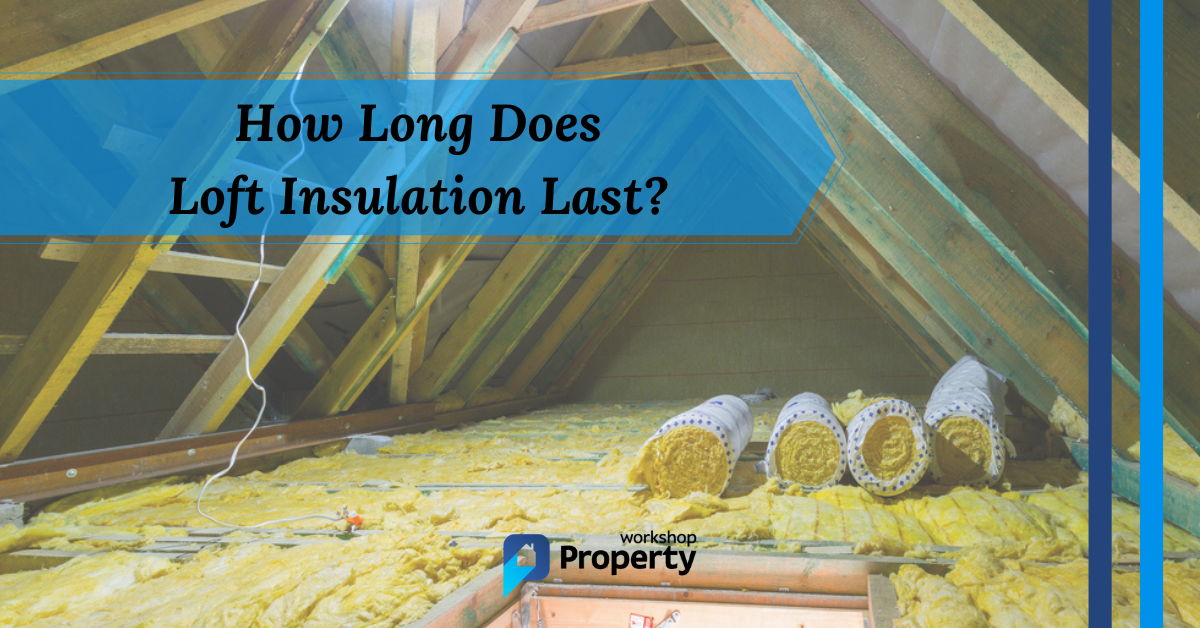Loft insulation lasts for a very long time. Most manufacturers quote a lifespan of 80 to 100 years, which means it will probably outlast you! However, that isn’t the end of the story.
Loft insulation only lasts this long if you keep it in optimum conditions. Exposure to cold, dampness, compression, dust, nesting birds, insects, rodents, and other damaging influences can drastically shorten your insulation’s useability.
Trust me when I say nesting birds or mice can play havoc with your insulation, which is something I found out to my cost!
The fact that you need loft insulation in the first place means that the conditions are already imperfect, so don’t place bets on your insulation receiving a telegram from the King on its 100th birthday.
So, now we know how long loft insulation lasts, let’s look at what shortens its lifespan.
If you turn up the thermostat more frequently, or your energy bills have increased, but your consumption hasn’t, it could be your loft insulation.
Why is my loft Insulation Failing?
So, what factors eat away at your insulation’s effective lifespan? We’ve already mentioned a few, but let’s look more closely.
Compression
When you move around your roof space, you compress the insulation, making it thinner and reducing its performance. Whenever possible, try and avoid making contact with the insulation.
If you need to store items in the attic, always place them on boards that straddle the beams rather than the insulation. And when you install the panels, ensure they never touch the insulation. For an idea of costs, check out our loft boarding cost guide.
Damp
Water seeping into your roof void is a killer. If there is any dampness, it waterlogs the insulation and causes mould and mildew. Once spores start to grow, they eat everything in their path.
The good news is you can get rid of mould, but it can be tricky to eradicate. If the mould spreads, it can affect the structural integrity of your roof trusses and supports.
Damp is one of the most damaging causes of insulation failure because it has a knock-on effect. Your plasterboard ceiling will stain and eventually disintegrate, wood rots, and your stored items deteriorate as the mould spores find new feeding grounds.
Pests
Uninvited guests living in your loft will disturb the insulation and cause it to become ineffective.
Many critters like to use soft, warm materials to make nests. No wonder they love it! It’s like wrapping their home in a quilt.
Chewed insulation, shredded fibres, or even missing sections will cause your energy usage to increase and, worse still, loft condensation forms as heat rises into the loft. Hot air meeting cold air in the roof void creates vapour.
When condensation forms, everything becomes wet, and you can say hello to your old friend, mould.
Below are the usual suspects:
- Rats and mice.
- Squirrels.
- Birds.
- Insects. I.e. bees, wasps, beetles and other boring critters.
Dust and Dirt
A lot is happening inside your loft. Air circulates through vents in the roof to help your home breathe, reducing damp and keeping everything dry. However, it also throws pollutants like dust and dirt around your attic.
Loft insulation can become clogged with dust, and over time, it reduces effectiveness and even compacts the insulation so that it becomes useless. There isn’t much you can do about the dust problem short of blocking off the air vents, but that would encourage damp.
Pro Tip: If you want to keep your insulation in mint condition, board your loft space. Laying down wooden panels protects the insulation from dust and dirt and gives you handy storage space.
Let’s Talk About R-Value
The R-value rates all insulation, but what does it mean?
The “R” stands for thermal resistance, and all insulation is gauged on its ability to resist heat transfer or loss.
R-values are essential when discussing material types because some materials perform better than others. Other factors affecting the R-value include thickness, density, and installation.
The higher the R-rating, the better the insulation performs and, hopefully, the longer it lasts.
How Long Does Loft Insulation Last — Materials

Some products are better at coping with environments or situations than others. Some loft insulation material attracts insect and animal life more than others. Let’s take a look at your options.
Fibreglass
Fibreglass is, by far, the most popular choice for loft insulation, as it’s cheap, easy to install, and fire-resistant. However, just because it’s the most popular option doesn’t make it the best performer.
Fibreglass is not the most environmentally friendly material, and it also causes breathing difficulties when inhaled and rashes when exposed to bare skin. Always wear gloves and a face mask to avoid problems later.
You can expect 80 to 100 years of useful life from your fibreglass insulation. However, where and how you install it makes a difference. While it resists rodents and insects, it is susceptible to moisture damage.
Fibreglass has a typical R-value of approximately 2 to 4, making it one of the lowest performers. For the best tips on installing fibreglass insulation, check out the video below:

| Pros | Cons |
|---|---|
| Cheap and readily available. | Not the best R-value performance. |
| Moisture resistant. | Not environmentally friendly. |
| Rodent and insect-repellant. | It causes breathing problems and skin rashes. |
| Fire-resistant. | |
| Doesn’t shrink over time. |
Wood/Recycled Paper
Using wood or shredded paper insulation is an excellent option if you want to use recycled materials and have a warm home. It’s called cellulose insulation and uses waste material to create thermal resistance.
It has a typical R-value of 3 to 4 per inch of thickness, so the thicker the insulation, the better the resistance, and the longer it performs to a higher standard. Furthermore, using recycled paper and wood to insulate your loft is cheaper than fibreglass by about 25%.
Before you shout about your eco credentials, remember that while using recycled paper is noteworthy, it may not be the planet-saver manufacturers claim it to be. Paper and wood are highly combustible, so cellulose insulation is treated with fire-resistant chemicals, which are toxic to the planet.
Installation is easy, but wear a mask because it’s messy. Tiny paper and wood fibres can be toxic when inhaled, causing even more medical problems than fibreglass. It also sucks up moisture like a sponge, meaning it won’t cope with damp.
Because of its delicate nature, wood and recycled paper insulation only last about 30 years. While it’s cheaper, the shortened lifespan eliminates any savings.
| Pros | Cons |
|---|---|
| Uses recycled material. | Sucks up moisture. |
| Easy to install. | Uses fire-resistant chemicals. |
| Higher R-value. | Toxic when inhaled. |
| Cheaper than fibreglass. |
Mineral Wool
Mineral wool is an insulation heavyweight made from melted stone and waste material from steel manufacturing plants. It has excellent sound-reducing qualities and is fire and moisture-resistant.
It has a typical life expectancy of between 30 and 80 years, although you can extend this if installed in optimum conditions. The lifespan is widely due to its ability to resist moisture, even in the wettest conditions.
It costs more than fibreglass and has an R-value of 3 to 3.5 per inch of thickness. Choosing mineral wool is not an environmentally friendly option, even though it uses waste material from heavy industries.
Mineral wool also comes in sections, known as batts, that slot between the rafters, making them easy to install.
IMPORTANT: A face mask is necessary when fitting mineral wool because the fibres are widely linked to cancer if inhaled.
| Pros | Cons |
|---|---|
| Fire-resistant to 982 degrees Celcius. | Expensive compared to other materials. |
| Improves sound insulation. | Highly toxic when inhaled. |
| Moisture-resistant. | |
| Uses recycled materials. | |
| Comes in easy-to-install batts. |
Cotton/Denim
Denim insulation is constructed from shredded denim jeans, so it has great eco credentials. It also provides excellent fire resistance, making it an ideal alternative to other insulation materials. Furthermore, denim has an R-value of 3 to 4 per inch of thickness.
However, denim insulation is similar in price to mineral wool, making it one of the most expensive materials.
The extra cost buys you a safe insulation material that resists fire and won’t irritate your lungs, eyes, or skin. One downside of cotton insulation is its susceptibility to moisture. I.e. get it wet, and it loses almost all its insulating qualities.
If treated properly and installed in the right environment, there’s no reason why you shouldn’t get 50 years plus from your denim insulation.
| Pros | Cons |
|---|---|
| Uses recycled cotton and denim jeans. | Expensive compared to other materials. |
| Safe to use. | Prone to dampness. |
| Fire-resistant. | |
| High R-value. |
Final Thoughts
If you install it correctly and have the right attic conditions, loft insulation can last a lifetime. Depending on the material you use, you should expect between 30 to 100 years of useful life.
If the idea of installing loft insulation fills you with dread, find a local specialist on Rated People. You can get competitive quotes and have the work done at your convenience.
For more ideas on improving your home, check out our article on home improvements that add value.

